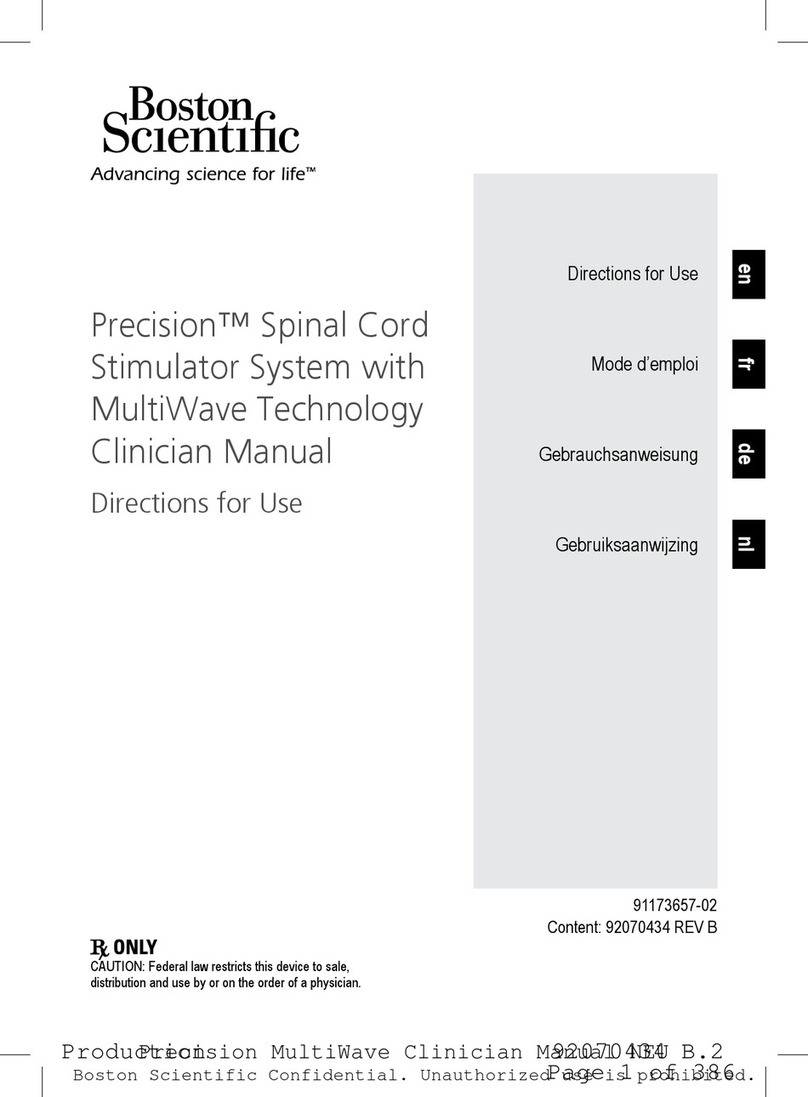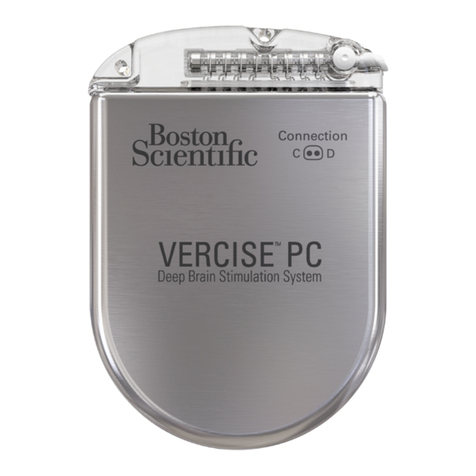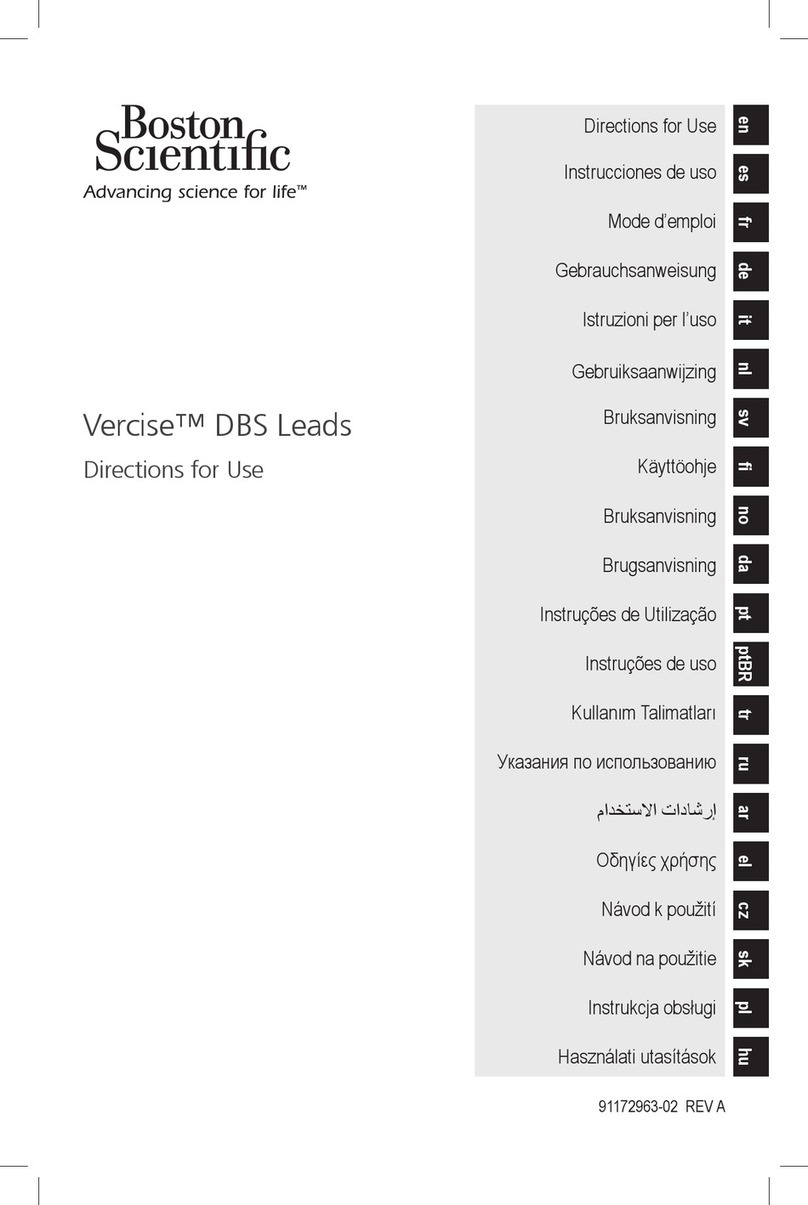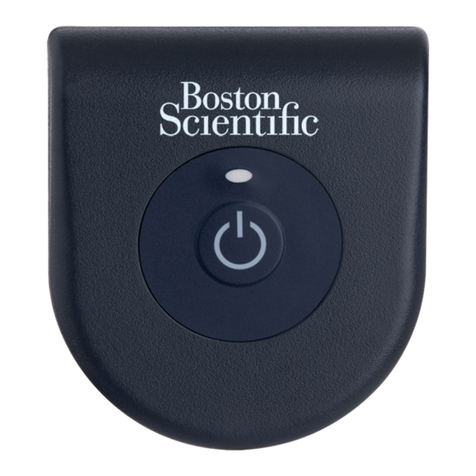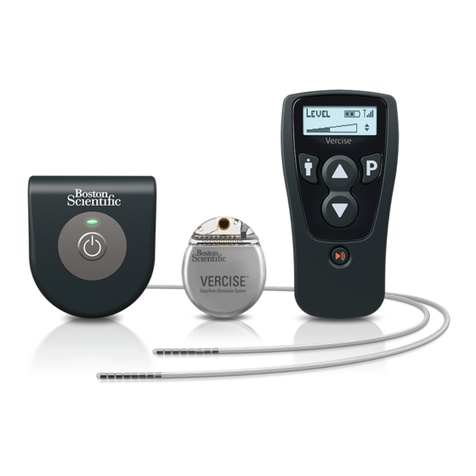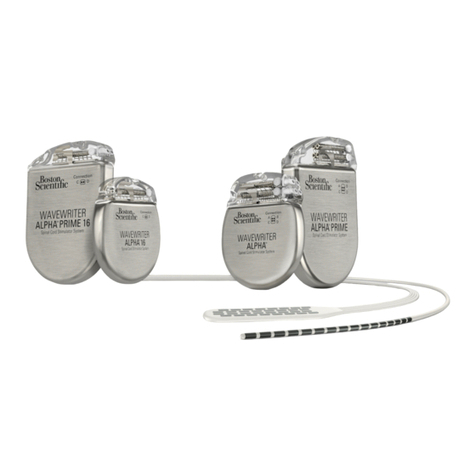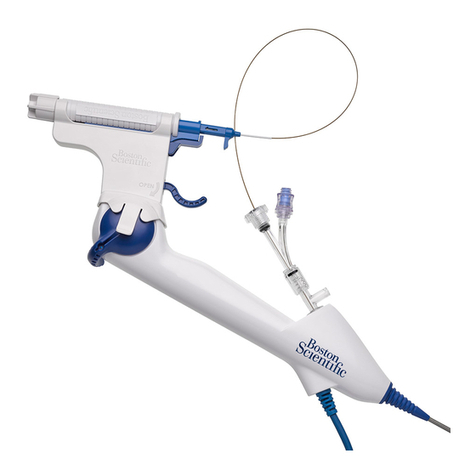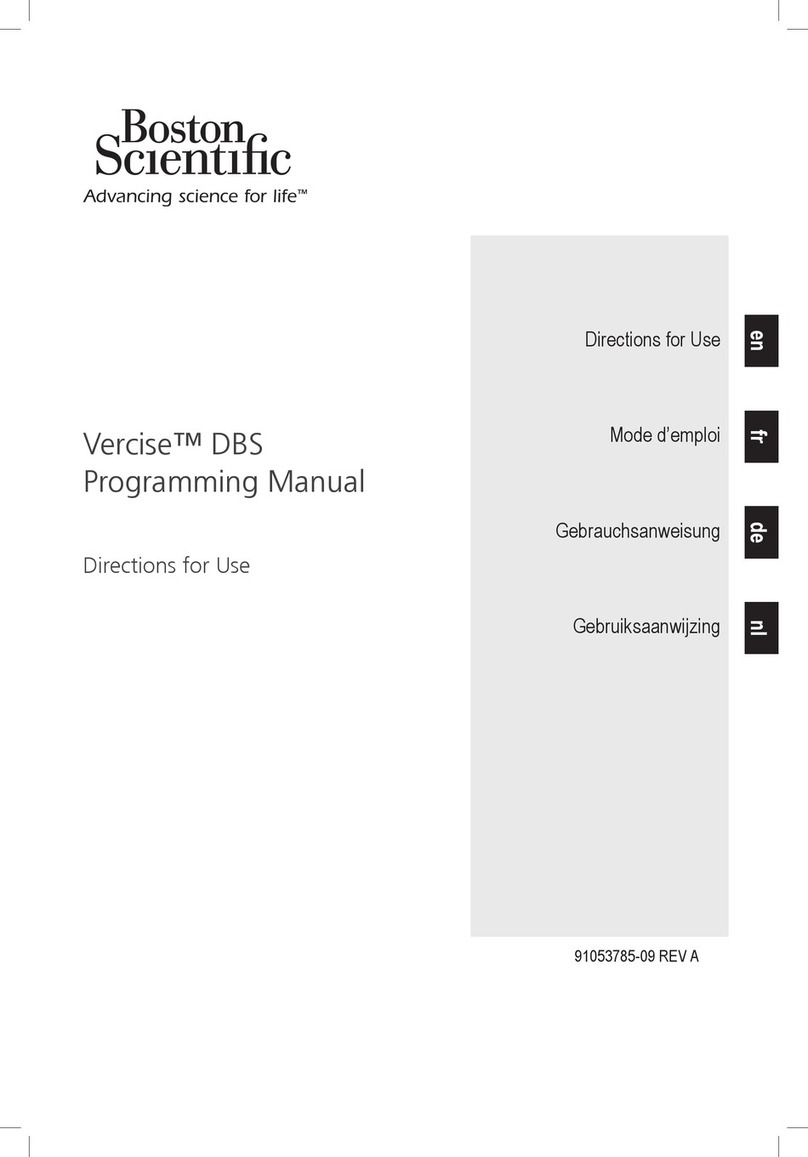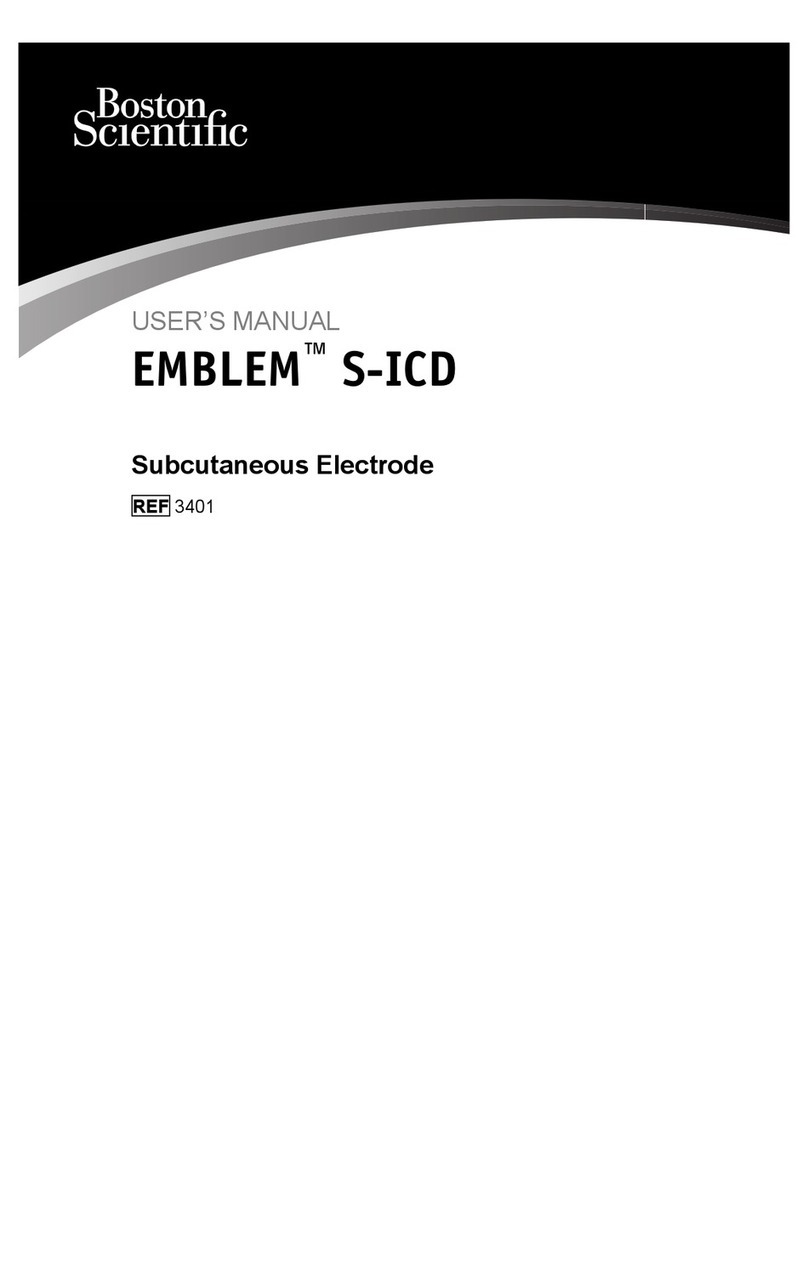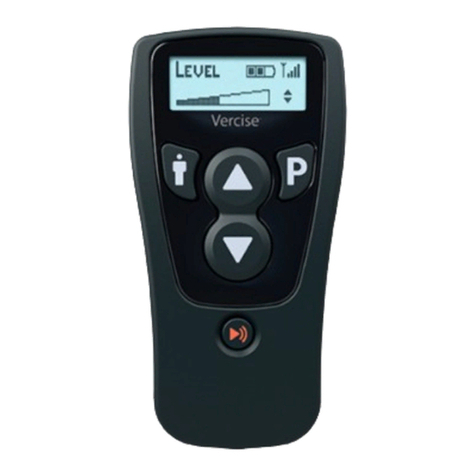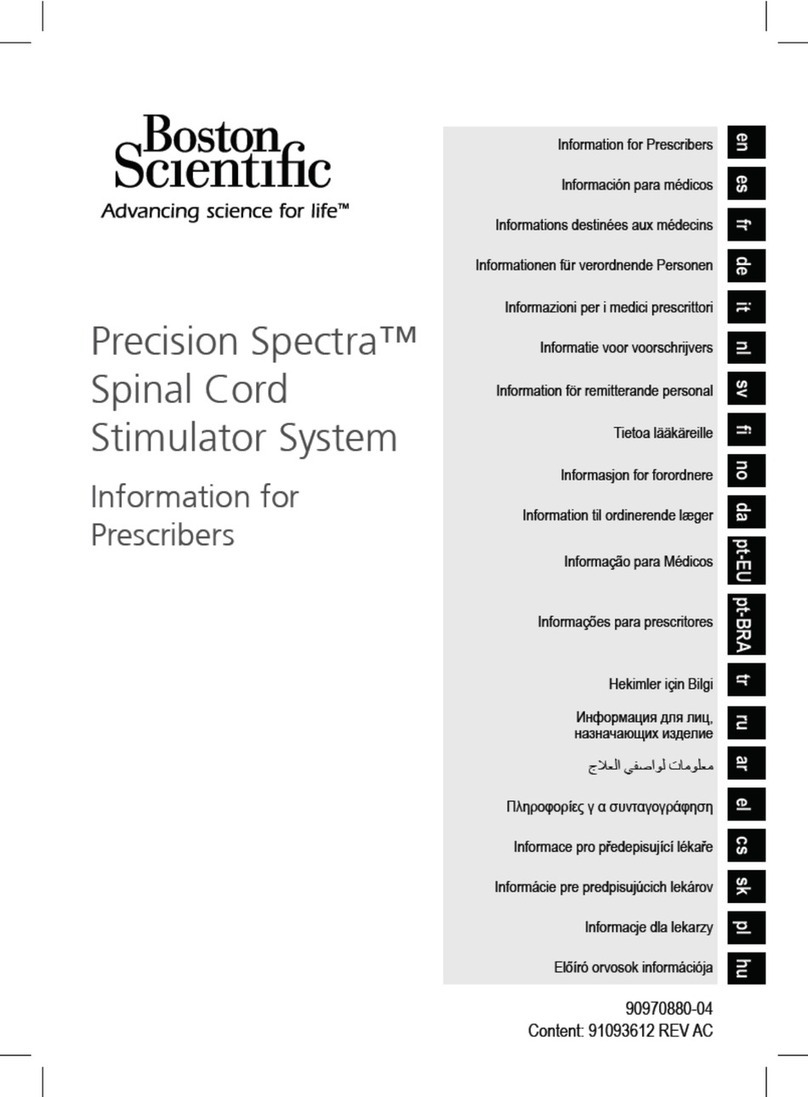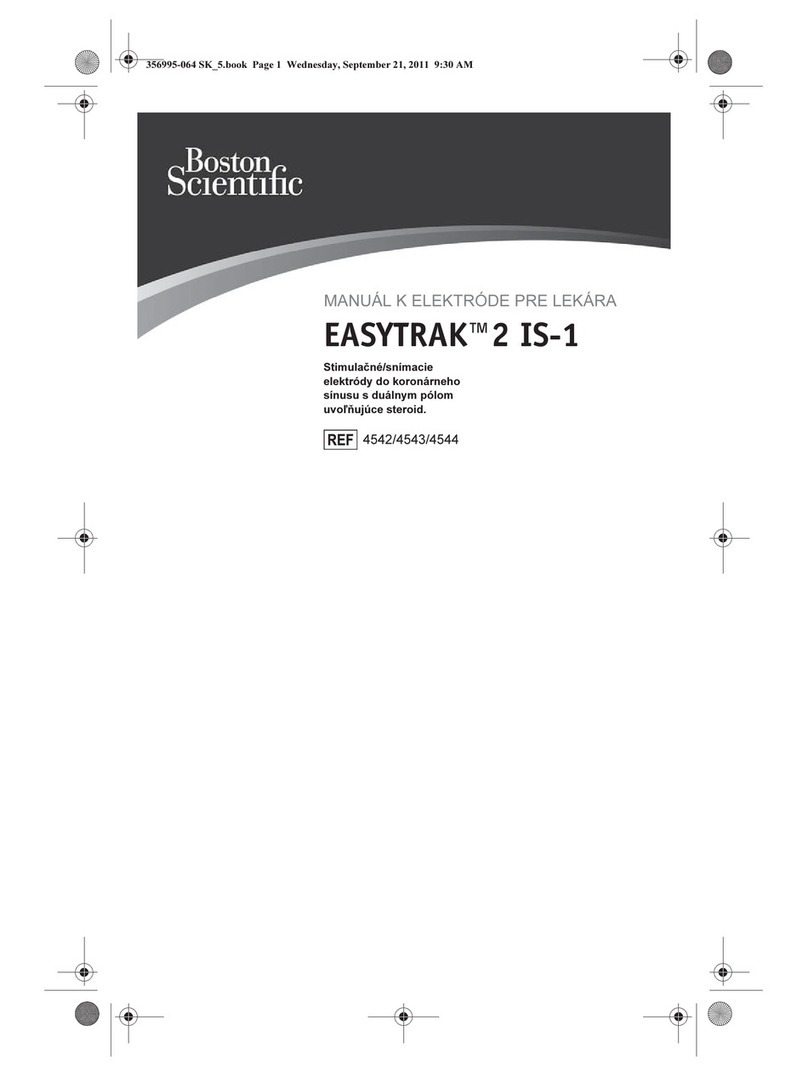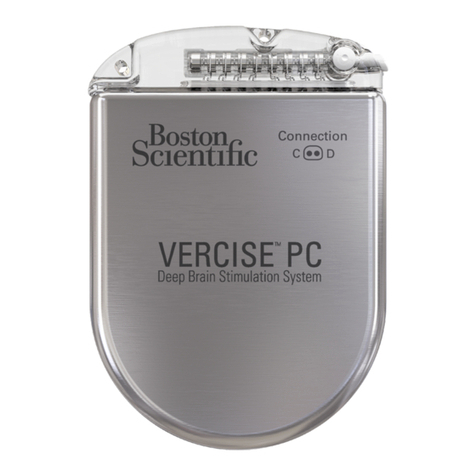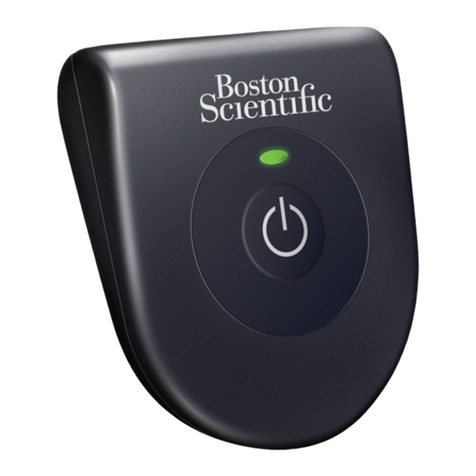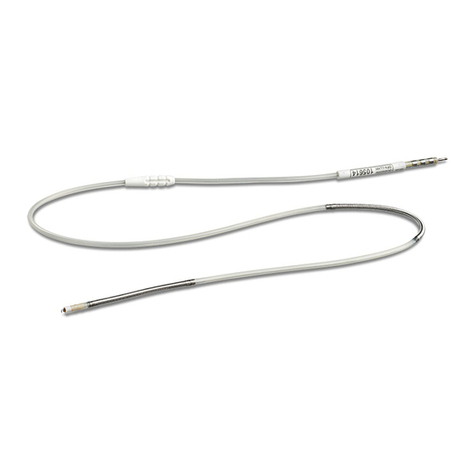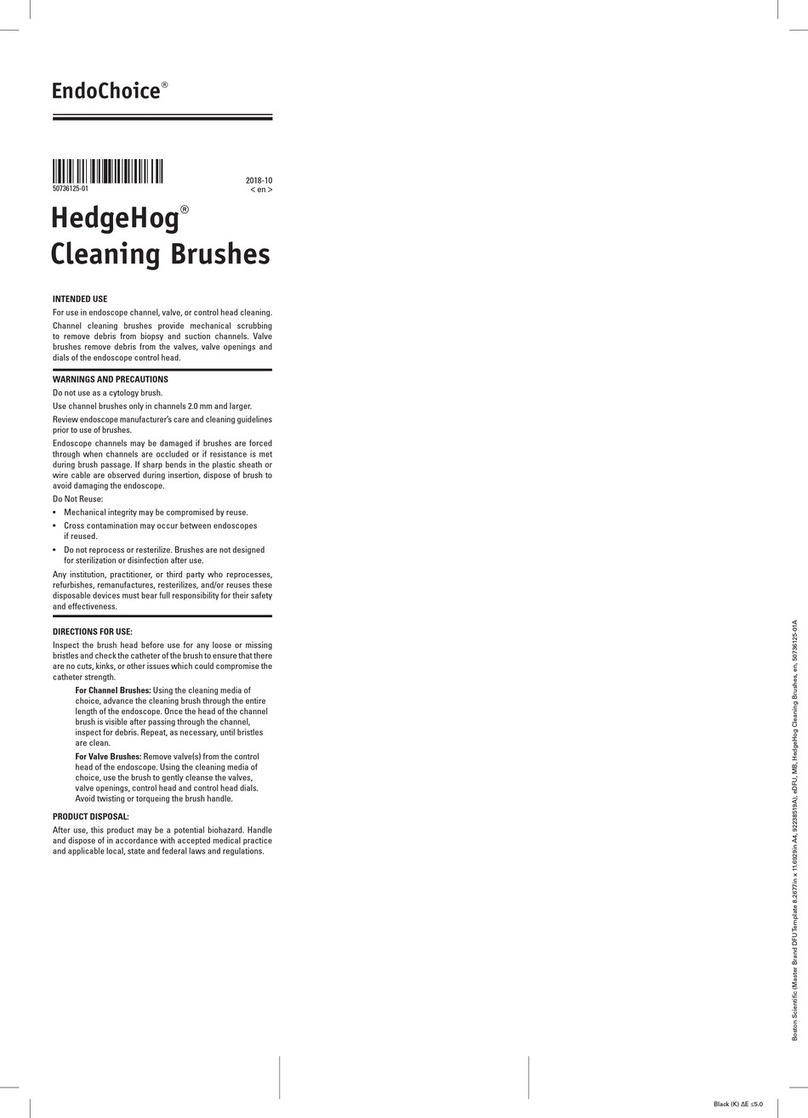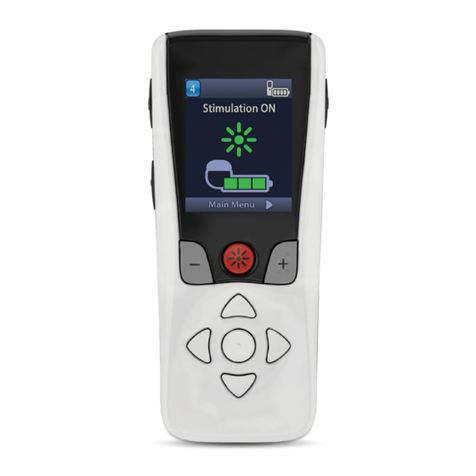
FLEXTEND
Lead Implant Tips
Exercise the Helix Before Implant
December 13, 2007 ©2007 Boston Scientific Corporation or its affiliates. All rights reserved. Page 1 of 3
Before implanting the lead, verify the mechanical functioning of the helix by rotating the
terminal pin to visually observe extension and retraction of the helix mechanism.
1. Attach the fixation tool to the terminal pin of the lead. Squeeze the handles together and
place the pin in the preformed groove. Release the tension on the handles to secure the
terminal pin in the fixation tool (Figure 1).
Figure 1. Fixation tool attached to terminal pin
2. Rotate the terminal pin clockwise approximately 6 to 8 turns (1 second per rotation) to
fully extend the helix.
3. Rotate the terminal pin counterclockwise approximately 6 to 8 turns (1 second per
rotation) to fully retract the helix into the lead body.
4. Remove the fixation tool by squeezing the handles of the tool together.
CAUTIONS:
•Do not over-extend or over-retract the helix. Exceeding the number of turns required to
extend or retract the helix can damage the lead.
•Do not use the lead if the helix cannot be extended or retracted or if the helix is
deformed.
Position the Lead
Atrial position Ventricular position
1. Advance the lead into the right atrium
using a straight stylet.
2. With the lead in the low right atrium,
insert the J-shaped or a curved straight
stylet.*
3. Gently pull the lead/stylet combination
at the venous entry site to ensure
contact between the lead tip and the
endocardium.
*Two different J-shape stylets are
provided. One has a longer reach and
may be suitable for most patient
anatomies.
1. Advance the lead into the right atrium using a straight stylet.
2. Advance the lead through the tricuspid valve or place the lead
tip against the lateral atrial wall and back the curved lead
body through the tricuspid valve. A curved stylet may
enhance maneuverability.
3. Use fluoroscopy (lateral position) to ensure that the lead is not
lodged in the coronary sinus and is in the ventricle.
4. Insert a stylet into the lead and gently push the lead/stylet
combination at the venous entry site to ensure contact
between the lead tip and the endocardium.
CAUTION:
•If the patient has a thin apical wall, consider an alternate
fixation site.
•If a conscious patient feels a sharp pain, this may be an indication
of perforation.
5. Minimize the application of lead tip pressure by partially
withdrawing the stylet during lead positioning. This will
minimize tip stiffness.
BACKGROUND INFORMATION
This article provides information to
enhance a user’s implant
experience with Boston Scientific’s
extendable/retractable FLEXTEND
and FLEXTEND 2 leads.
This article does not contain a
complete list of implant
instructions and is not intended
to supersede device-specific
labeling. For complete implant
instructions and potential risks,
please refer to the appropriate
Instructions For Use manual.
Lead fixation using an extendable
helix mechanism is one risk factor
for cardiac perforation. Refer to the
Product Update entitled
“Implantable Pacing Leads and Risk
of Cardiac Perforation” available on
www.bostonscientific.com for further
information.
CRM PRODUCTS REFERENCED*
FLEXTEND Models 4086 / 4087 / 4088;
FLEXTEND 2 Models 4095 / 4096 / 4097
*Products referenced herein may not be approved in all
geographies.
CRM CONTACT INFORMATION
Technical Services – U.S.
1.800.CARDIAC (227.3422)
Technical Services – Europe
+32 2 416 7222
LATITUDE Clinician Support
1.800.CARDIAC (227.3422)
Patient Services
1.866.484.3268 – U.S. and Canada
001.651.582.4000 – International
